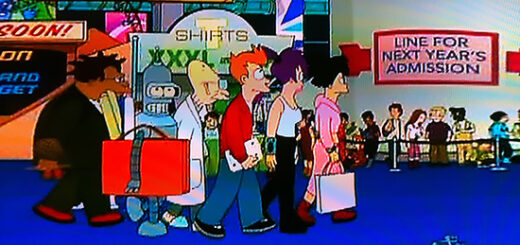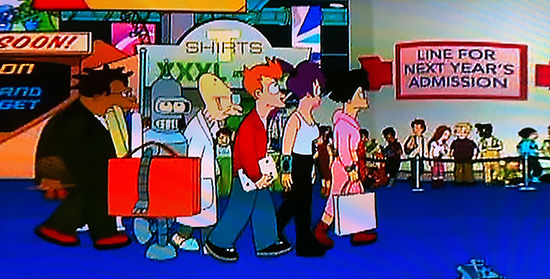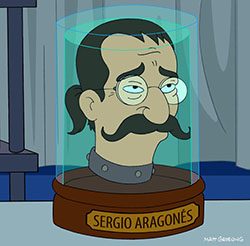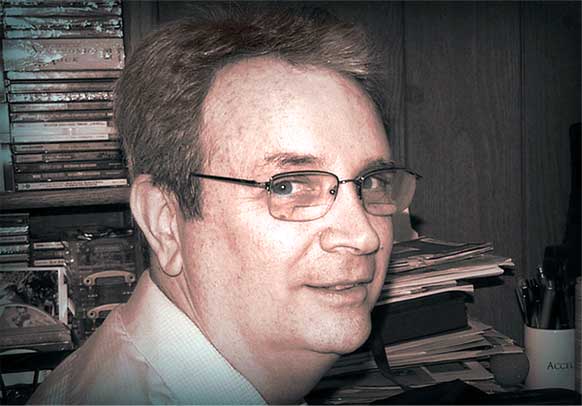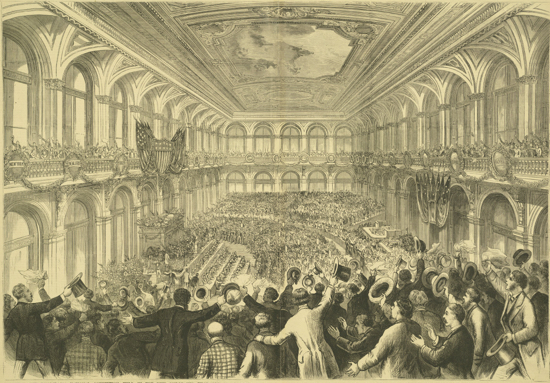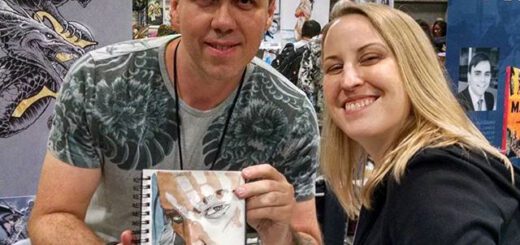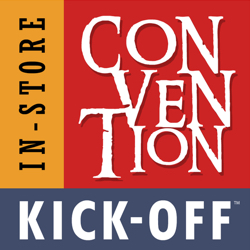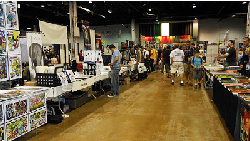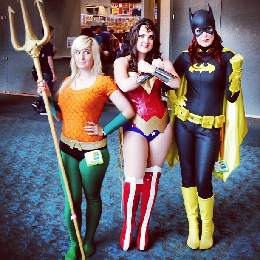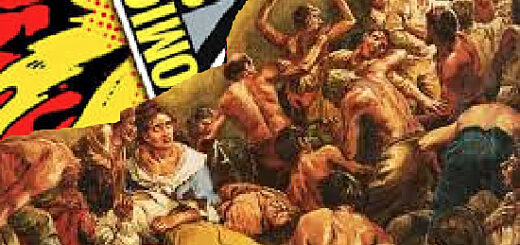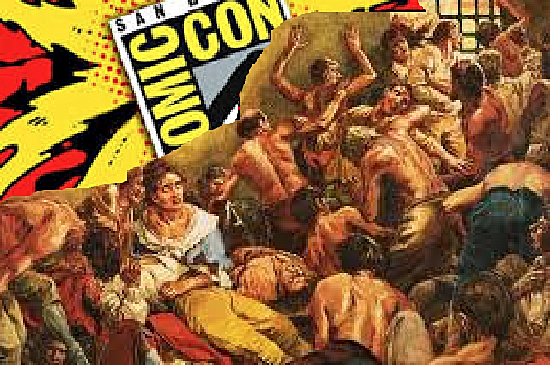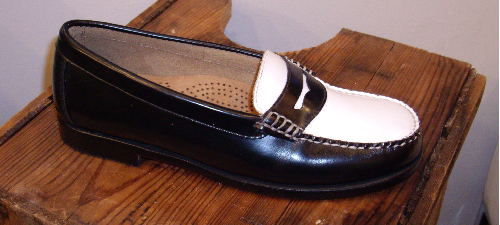Con season has well and truly slid into gear now; with Awesome Con kicking things off a few weeks ago and SDCC and NerdHQ fast approaching. Of course, con season is really year-round these days; but for me, it starts with Awesome Con and ends with New York Comic Con.
This year’s Awesome Con was, as usual, a great start to the season for me. What I like about the con is that despite only being four years old, it’s managed to integrate various fun aspects of different flavors of cons into a fairly seamless whole – meaning that if you aren’t there for one particular facet of the offerings, there are plenty of others to experience. Here were some of the highlights for me:
The media guests:
Awesome Con has consistently done well in getting big names to a young con. This year’s lineup included everyone from screen actors Robin Lord Taylor, Morena Baccarin, Summer Glau, Karl Urban, Peter Capaldi, Jenna Coleman, Matthew Lewis, Jon Barrowman, Brett Dalton, Adam West, and Burt Ward to popular voice actors like Phil LaMarr, Grey DeLisle, Billy West, John DiMaggio, Will Friedle, and Charles Martinet; and also brought folks like professor and writer Carole Barrowman, popular scientist Bill Nye, animator/voice actor C. Martin Croker, and writer/director Kevin Smith to round out the collection.
I had a great time seeing old friends, meeting new amazing, talented folks, and interviewing the fantastic Robin Lord Taylor for ComicMix (and what a delight that man is in person. Seriously. So nice!). I also got a huge kick out of the dichotomy of the two autographs I picked up– Zoidberg (Billy West) was “sooo into” me, but Azula (Grey DeLisle) banished me. Hah! I kind of want to hang them up together.
Panels:
For the last couple of years I’ve been a panel moderator at Awesome Con (a job that can mean anything from being prepared with questions and conversation to excitedly listing off a few guest names and then sitting back and watching the show), which means those are generally the panels I get a chance to see. This year started out with Saturday’s Futurama panel, featuring voice actors Billy West, Phil LaMarr, and John DiMaggio. The room was packed, the crowd was excited, and the panelists were on fire, making the hour fly by with tons of laughter (and reinforcing my firm belief that you cannot possibly be bored at a voice actor panel). Man, I wish they’d bring Futurama back (again) (another time) (Zombie Futurama, Hi-yoooo!).
The next panel I moderated was for the Discovery Channel’s Destination America: A Haunting, a show that examines real people’s paranormal experiences. The panel featured actor and narrator Tony Call, ghost hunter John Drenner, Jr., show runner Cecile Weiland, and executive producer Cathy Garland, along with clips from the show and new season, and a cool Q&A with the audience, most of whom were True Believers. That made for a pretty cool Q&A with the panelists, who are passionate about their show and creating the best experience for viewers. I learned more than I even expected about the process of making the show, aaaand got a little creeped out while watching the clips. *shiver*
On Sunday, I got to moderate writer and English professor Carole Barrowman’s second panel. That panel was pretty much like attending an interactive workshop on writing techniques and tips, and was a great learning experience. Carole shared stories about her life and working with her brother John Barrowman as well as guidance on writing and her own creative process, and was a blast to listen to (and a super-cool, nice person, too!).
Although moderating kept me busy, one panel I didn’t want to miss was Bill Nye’s Star Talk Live! with Bill Nye, Eugene Mirman, Hari Kondabolu, Dr. Dava Newman, Dr. David Grinspoon, and Jo Firestone. It was the headliner for Awesome Con’s Science Fair, which was another great facet of the con. I got to hear most of the talk before I had to rush off, and it was epic. The panelists discussed the possibility of getting “boots on Mars” in the relatively near future; and made me want to join The Planetary Society and also go read The Martian Chronicles again. Dava Newman, the Deputy Administrator of NASA and a Professor of Aeronautics and Astronautics and Engineering Systems at the Massachusetts Institute of Technology, and Dr. David Grinspoon, astrobiologist and Senior Scientist at the Planetary Science Institute, were particularly interesting. And the addition of comedians to the mix of scientists made it an amusing as well as exciting talk. I’m so glad I didn’t miss that one!
Artist Alley:
I always love Artist Alley; and this year, I felt Awesome Con’s had gotten more robust, with a good collection of big-name and major company creators along with newer talents and independent creators. Among other things I was finally able to meet Skottie Young, albeit briefly as he was only in town for the day (but I always seem to miss him at cons, so was glad to catch him). I also picked up his I Hate Fairyland, which is about a snarky gal with a battle axe (!) who’s trapped in Fairyland. I got to chat with Fred Van Lente, who had, among other things at his table, a stack of Assassin’s Creed issues with a little sign that said, “Ask me why this comic is weird;” and because I can never resist such things, I ended up asking and then buying an issue that has no page 1 and two page 18s! I visited with Joe Harris and Matthew Dow Smith, and picked up the X-Files Christmas Special, as recommended by Matt. I also got to say a quick hi to Franco Aureliani and Marc Hempel (although I somehow missed getting to Mark Waid and Mark Wheatley, thus utterly failing in my goal to See All The Mar(c)ks).
Another fun thing I did while in Artist Alley was walk around with my coworker, and her daughter who is getting interested in creating comics. I had so much fun taking them around and introducing her daughter to the likes of Jim Calafiore (from whom I also picked up Leaving Megalopolis, his project with Gail Simone, which I’ve been wanting to read), Mike McKone, Daniel Govar, and Andrew Aydin so that she could ask them about how they got into comics and what tips they might have for an aspiring creator. It was great to watch these professionals take the time to encourage her and give her advice.
While in Artist Alley I also began a “project” I meant to start ages ago, when I bought a little Canson spiral sketchbook; which is to collect sketches from favorite artists. I started the collection with Tony Moy (from whom I also finally acquired this Vitruvian Totoro on a wood block, which I’ve been coveting for several conventions) and Daniel Govar. Such great pieces to start off my book!
Shopping & the Exhibit Floor:
The exhibition floor, with its booths and shopping, was crowded but great fun. In terms of merchandise it offered everything from comics and big-ticket collectibles to toys and handmade crafts. I, of course, can never resist a bit of shopping no matter how I try (really, I tried!!) which is how I ended going home with a stuffed and mounted narwhal head for my bathroom (what? It’s perfectly normal to have fictional creature heads mounted in your bathroom!); a tiny happy pancakes magnet (it’s so happyyyyy! And the magnet is strong); a cuddly crocheted Companion Cube (so squishable!!); and a little green keychain Kirby (for luck! Green Kirbys are lucky, right? I feel that they must be).
While wandering the floor, I also happened upon just a couple of the many fun display or educational exhibits set up. One was the Department of Energy’s booth (which apparently Awesome Con provides for free because it’s a government agency – good for Awesome Con!) at which a gal from Aftershock Comix was demonstrating DOE’s super-cool interactive energy display; and the Geppi Museum’s immensely fun traveling museum, which was literally awesome; as in, I was awestruck by some of the great pieces they had on view in this very well-set up, professional and attractive display – all the more impressive because it was the very first time they’ve displayed this traveling exhibit, despite having had the idea to do it for some time. If you’ve been to Geppi’s Entertainment Museum in Baltimore, you will know that Steve Geppi’s collection of comics and pop-culture memorabilia is overwhelming and awe-inspiring, and that it’s a lot of fun to wander through the myriad rooms in the building, reminiscing about things you recognize, and coveting pieces you might never think you’d see in person. And even though obviously they couldn’t bring the whole collection to Awesome Con, the pieces in the mini-museum had been carefully selected to represent a broad variety of really, really cool stuff – from extremely early Mickey Mouse art to rare Spider-Man comics, and more. The mini-museum also featured several video screen displays, one of which showed parts of the full museum and another of which was interactive and allowed you to read some of the comics on display. The display also featured a very old working television playing early films, and other nifty pieces. The plan is for the traveling museum to go to cons all over the country; and if it’s at one you’re going to, I highly recommend you check it out.
And of course, while walking around the floor and con, I encountered some fun cosplay, which is always neat. One particularly fun photo I got was of Aquawoman with the voice of Aquaman (Phil LaMarr); but I also enjoyed this extremely good Winter Soldier who posed with my friend Tom as Captain America; this Squirtle that my friend Rachel was delighted to see; these genderbent Captain America: The First Avenger gals; and the most adorable (and age appropriate, thank goodness!) Harley Quinn and Poison Ivy you’ve ever seen.
And that pretty much wrapped up the con for me. Except, of course, for the “afterparty,” which for me means finding a chill bar nearby for a drink and dessert (the best way to round out your convention experience!). This year, the bar wind-down also included two guys arting (finishing up some commissions before going on their way) which made it way, way cooler than it would otherwise have been. You’re good peoples, Dan Govar and Tony Moy. Also, I want all of your art.
But the fun isn’t over, you guys. Because in just three weeks, I’ll be heading off to San Diego Comic Con and Nerd HQ, two concurrent and fantastic events that I can’t wait to attend. The exclusives, guest news, and other things to look forward to have already started appearing all over the internets, and I’m hearing great things about this year’s NerdHQ. So stay tuned, and hopefully I’ll have more fun con news, interviews, and round-ups for you soon.
Until next time, Servo Lectio!
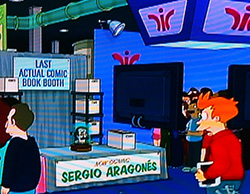 I’ve dedicated my current travel schedule to the “smaller” conventions (of course, by comparison to SDCC the Roman Coliseum held “smaller” conventions). You know, the shows where I can talk with the fans, find out what people like and don’t like and might like, talk with the retailers and guests, and never have to wait more than five minutes to get through the bathroom line. I’ve been doing comic book conventions for 49 years, back when our product was printed on papyrus. The late and deeply lamented Phil Seuling held his first “big” convention in New York City in 1968. There were 300 people there, and all of them were thinking the same thought: “Holy crap! There are 299 other people who are just like me.”
I’ve dedicated my current travel schedule to the “smaller” conventions (of course, by comparison to SDCC the Roman Coliseum held “smaller” conventions). You know, the shows where I can talk with the fans, find out what people like and don’t like and might like, talk with the retailers and guests, and never have to wait more than five minutes to get through the bathroom line. I’ve been doing comic book conventions for 49 years, back when our product was printed on papyrus. The late and deeply lamented Phil Seuling held his first “big” convention in New York City in 1968. There were 300 people there, and all of them were thinking the same thought: “Holy crap! There are 299 other people who are just like me.”
